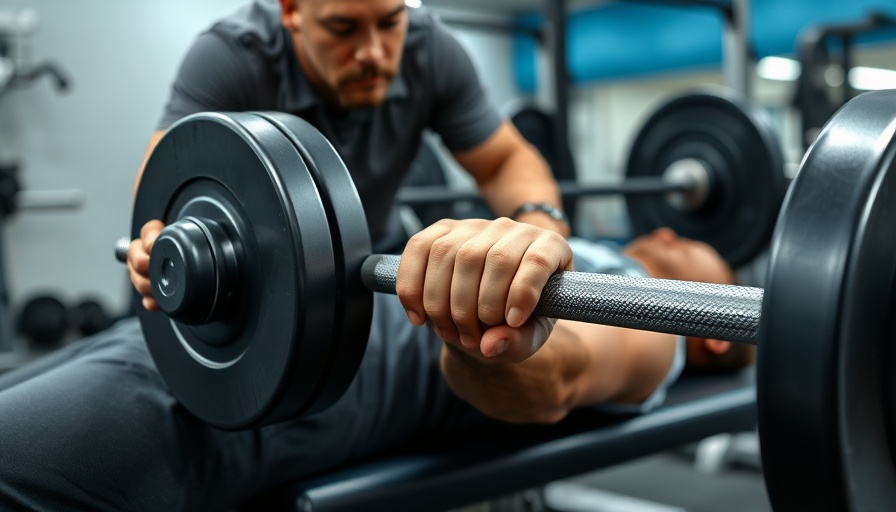
Mastering Your Bench Press Setup: A Key to Success
The bench press is a cornerstone exercise for building upper body strength and is a staple in any fitness routine. However, how you set up your bench press can make all the difference when it comes to maximizing your results safely. By examining the key techniques outlined in the video, The BEST Way To Set Up Your Bench Press, we delve deeper into optimizing this essential lift for gym owners and fitness trainers.
In The BEST Way To Set Up Your Bench Press, the discussion dives into the critical elements of bench press techniques, exploring key insights that sparked deeper analysis on our end.
The Importance of Safety Pins
First and foremost, the use of safety pins cannot be overstated. These safety mechanisms allow users to bench press with confidence, knowing that if they fail a lift, the barbell will be secured in place without risking injury. Setting the pins at the correct height is crucial—it should be just below your chest level when you are lying on the bench. This approach not only enhances safety but also encourages lifters to push themselves without the fear of getting pinned under the weight.
Finding the Optimum Hook Height
Determining the best hook height can be accomplished with a simple technique: when lying back on the bench, you should be able to look directly at the underside of the barbell. As demonstrated in the video, aligning your eyes with the bar will ensure safe and efficient lifting mechanics. It allows the lifter to avoid hitting the hooks when bringing the bar out, facilitating a smooth range of motion. Establishing that visual cue is pivotal in creating a safe environment.
Understanding Grip Width for Maximum Effectiveness
The grip width is another critical element to consider when bench pressing. A good starting point can be gauged from one's overhead press grip, moving out slightly towards the edges of the knurling on the barbell. This setup helps attain a vertical forearm position when the barbell touches the chest, enabling the lifter to generate more power during the lift. Precision in this detail plays a significant role in effective bench pressing and directly affects strength outputs.
Achieving the Proper Shoulder Position
Proper shoulder technique can enhance lifting performance dramatically. As illustrated in the video, tucking the shoulder blades back and down creates a natural arch in the back. This positioning not only stabilizes the lift but helps in avoiding shoulder injuries, which are common in improper bench setups. Encouraging lifters to maintain tension in their shoulder area is not merely for aesthetics; it is essential for biomechanics.
Best Practices for Foot Placement
Lastly, foot positioning should never be overlooked. The feet should remain flat on the ground and placed roughly shoulder-width apart, with toes pointed slightly outward. This setup promotes a strong, stable base that supports effective lifting mechanics. Establishing this connection to the ground ensures that lifters can generate power through their legs, providing more strength when pushing the barbell upward, ultimately leading to more significant gains.
Takeaway for Trainers and Gym Owners
In conclusion, understanding the fundamental techniques behind the bench press setup can empower trainers and gym owners to offer effective guidance to their clients. Ensuring clients are educated on the importance of each aspect—from safety pins to grip width—creates an informed and safer workout environment. As the fitness landscape evolves, these essential principles remain critically important to solidifying strength training foundations.
Effective bench press instruction is invaluable. Whether you’re introducing new lifters to the bench press or refining the techniques of seasoned athletes, your insight can help others achieve their fitness aspirations safely. Let’s set the standard in our gyms by mastering the art of bench pressing with precision and care.
 Add Row
Add Row  Add
Add 




 Add Row
Add Row  Add
Add 

Write A Comment